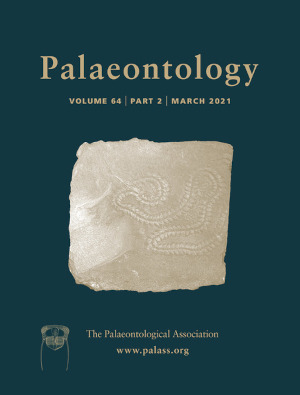Reg. Charity No. 1168330

The documentation of proteinaceous soft tissues in fossils from deep time remains controversial. Often this has been attributed to the laboratory or other modes of modern contamination. Here we provide incontrovertible evidence for the preservation of proteinaceous moieties in Maastrichtian dinosaur eggshell using pyrolysis-GC×GC-TOFMS. The presence of nitrogen-bearing organic molecules along with diketodipyrrole suggests that the proteinaceous moieties can survive diagenesis. The preservation of these proteinaceous moieties has been attributed to deposition in a palustrine flat environment under subaerial conditions and entrapment of organic material by the eggshell calcitic units. The present study demonstrates that the preservation of nitrogen-bearing macromolecules in Mesozoic fossil remains is not impossible provided that the depositional environments and diagenetic processes are propitious. The survival of nitrogen-bearing macromolecules in deep time under subaerial depositional settings will open a new avenue of research on soft tissue preservation.
AcknowledgementsThe authors have benefited from discussions with Prof. S.K. Tandon on depositional environments of the Lameta Formation. The authors would like to thank Dr David Kothamasi and Mr Gaurav Vashistha for providing modern gharial eggshell. The authors are thankful to the two anonymous referees for their comments and suggestions on an earlier draft of this manuscript. HD acknowledges financial support in the form of Shyama Prasad Mukherjee Fellowship from CSIR, New Delhi. GVRP acknowledges the funding support for this work from Science and Engineering Research Board (SERB), New Delhi in the form of J.C. Bose National Fellowship.
HD, SD and GVRP conceptualized the work; HD, SD, VV and GVRP. collected the resources; SD and SK curated the data; SD and SK provided the software; SD and SK conducted the formal analysis; SD and GVRP supervised the work; HD, SD and GVRP acquired the funds; SD and GVRP validated the data; HD, SD, SK and GVRP investigated the data; HD, SD, SK and GVRP visualized the manuscript; HD, SD and GVRP designed the methodology; HD prepared the original draft; SD and GVRP administered the project; SD and GVRP reviewed and edited the work.